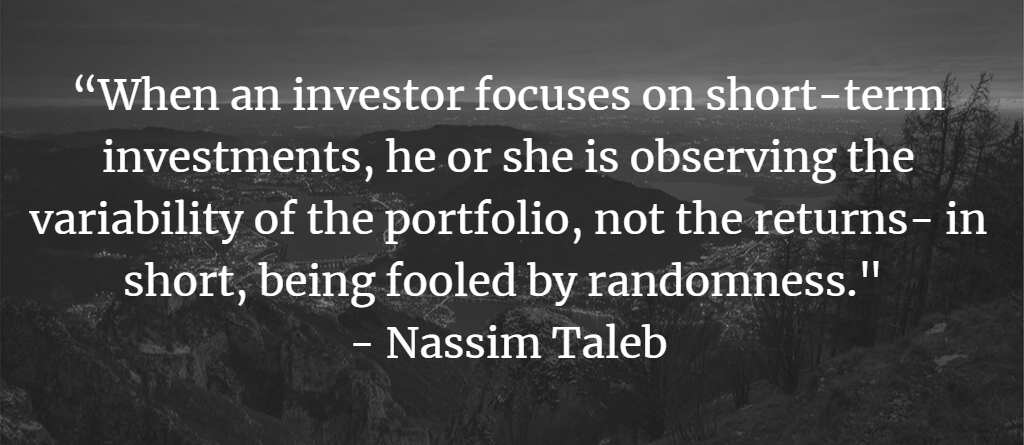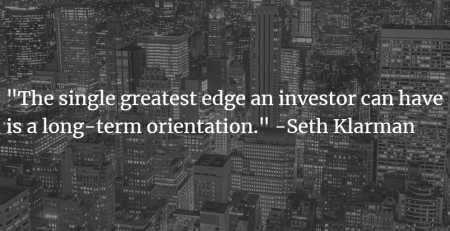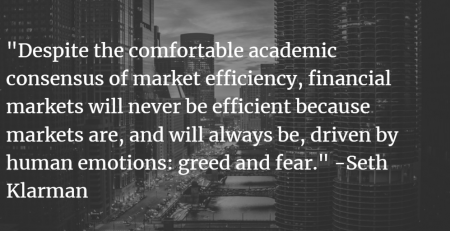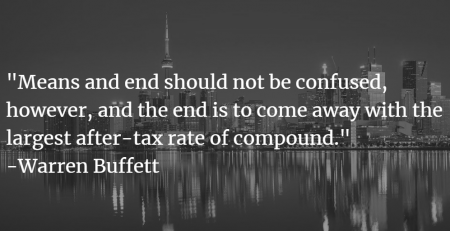Market Update: How To Interpret Recent Volatility
On March 17, 2020, we published an article titled Market Update: The World is Ending (Again…) in which we discussed the large (at the time) sell off in the market related to the onset of the Covid-19 pandemic. While the title of the article was purposely hyperbolic, the message we conveyed was simple and arguably timeless – market volatility is to be expected over any short period of time, however over the long run, 100% of all past crises have proven to be good buying opportunities.
We only bring this up to put into context the recent sell-off we have experienced so far in 2022 with the market (as proxied by the S&P 500) down roughly 8% YTD – or if we zoom out, up roughly 15%, 110%, and 300% over the past 1, 5, and 10-years. In other words, even with the recent pull back in markets, plus the 2020 Covid-19 shock, long-term investors have still been handsomely rewarded.
We often talk about the advantages that comes with a long-term mindset. When everyone else is rushing to sell for either emotional or liquidity reasons, the long-term investor can calmly and rationally assess the opportunities being created and begin to acquire great businesses at bargains. While the rest of the market’s focus shifts to short-term macro news, the long-term investor can remain focused on the business fundamentals that will ultimately drive their investment performance.
That being said, a long-term mindset is only useful when one invests in the companies that have sustainable competitive advantages. If a business lacks this defensibility, time stops working in your favor and instead works more like a countdown to the permanent destruction of your capital. Many companies that are down 80%+ today remain unattractive for this very reason – either their market is more competitive than the market estimated, or their business models are structurally unworkable.
The Only Risk That Matters: Business Risk and Permanent Capital Impairment
When it comes to permanent impairment of capital, we are talking about risks to the underlying companies that we own. Stock price movements are not real long-term risks if the underlying business itself remains resilient and valuable.
The easiest way to explain the difference between short-term price risk and long-term business risk is with an example. Consider our portfolio holding in American Tower which is currently down roughly 15% YTD. Note that when we say ‘down’, we mean the price that American Tower trades in the market is 15% lower than it was at the start of the year. What we do not mean is that American Tower will generate 15% less earnings than it did at the start of the year, nor that the company is 15% less valuable as an entity. Earnings will likely grow high single digits in 2022 and for many more years to come.
American Tower is one of the largest owners of cell towers in the US (along with Crown Castle, which we also own, for different reasons). These towers are incredibly valuable assets, as they are arguably the bottleneck when it comes to us all consuming more and more mobile data. American Tower simply owns the tower and rents space to the carrier companies (AT&T, Verizon, etc.) on very long-term contracts to fix their equipment on – which results in a low fixed cost, stable, hugely cash generative business. These towers typically have 10-20-year inflation-linked contracts with the carriers. It is very hard to build any new towers as zoning is so difficult to achieve, so there is little competition.
American Tower benefits from a multi-decade inexorable trend in the growth of mobile data consumption driven by ever-increasing smartphone penetration, faster available mobile internet speeds, huge growth in content (particularly video such as Netflix, Disney+, etc.) being consumed on mobile devices, as well as the huge growth in the number of internet-enabled devices. The cash flow predictability is exceptional, and American Tower is taking this cash flow and reinvesting it into new towers (and portfolios of existing towers) in faster-growing and much earlier stage markets like Brazil and India, as well as adjacencies in interconnect data centers providing a tremendous runway for continued growth.
American Tower is an example of a company with extremely little business risk, thus little risk of permanent capital impairment. Despite all of this, American tower has seen its share price fall by more than 30% peak to trough on 2 different occasions over the past 2 years. For some investors who focus on price, each of these drawdowns would have been a red flag to exit the position, and those investors would have lost out on the continued compounding of the underlying business fundamentals well into the future.
Now let’s take the example of a company where the business risk is far higher than American Tower – AMC Theatres. As you know, the advent of streaming technology has been painful for traditional movie theatres, and then the onset of Covid-19 crushed most of the demand that remained. Today, many of these businesses are burning through investors cash and will likely need a new infusion of capital in the future, diluting current shareholders, or a major restructuring to continue as going concerns.
That said, the market price of AMC was up almost 3,000% at the start of 2021 further proving the disconnect between market prices and underlying business risk. Now, which company would you rather own over the next 5, 10, 20 years? A company where it would be very hard to imagine a world in which their product isn’t only still useful, but even more so, or a company that may not even be in business anymore?
Many market participants would argue that even if AMC might not be around in a decade, they can still make money trading the stock in the short-term. We would argue that it is near impossible to forecast short-term price swings and if you ever get it wrong you run the risk of setting back your investment performance by decades. Remember that any string of great yearly returns multiplied by just one zero is still zero.
The safest, most rewarding approach is always to focus on the underlying business, and the risks at that level. The most attractive situation for Genuine Investors is when stock prices are falling while business fundamentals are improving, and there are certainly situations like that around us today. During this current market correction we will continue to do what we always do, and buy what we believe are the best opportunities that the market provides us.
Legal Disclaimer: This document expresses the views of the author as of the date indicated and such views are subject to change without notice. Globescan Capital, Inc. is DBA as GCI Investors, and has no duty or obligation to update the information contained herein. Further, Globescan Capital, Inc. makes no representation, and it should not be assumed, that past investment performance is an indication of future results. Moreover, any information or opinions contained in this document are not intended to constitute a specific recommendation to make an investment.
The information contained herein does not constitute and should not be construed as an offering of advisory services or an offer to sell or solicitation to buy any securities or related financial instruments in any jurisdiction. Certain information contained herein or linked to is based on or derived from information provided by independent third-party sources. Globescan Capital, Inc. believes that the sources from which such information has been obtained are reliable; however, it cannot guarantee the accuracy of such information and has not independently verified the accuracy or completeness of such information or the assumptions on which such information is based.






